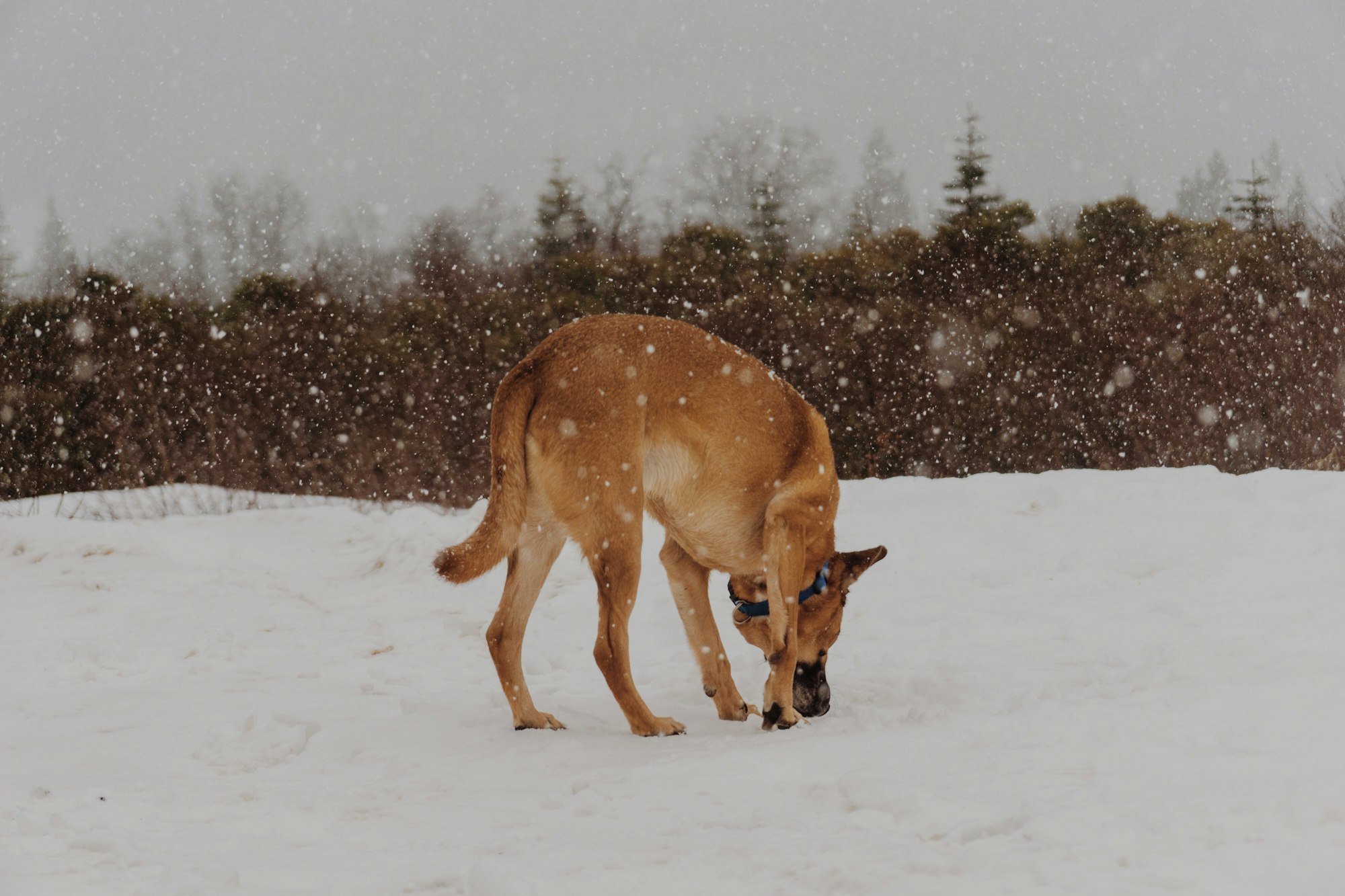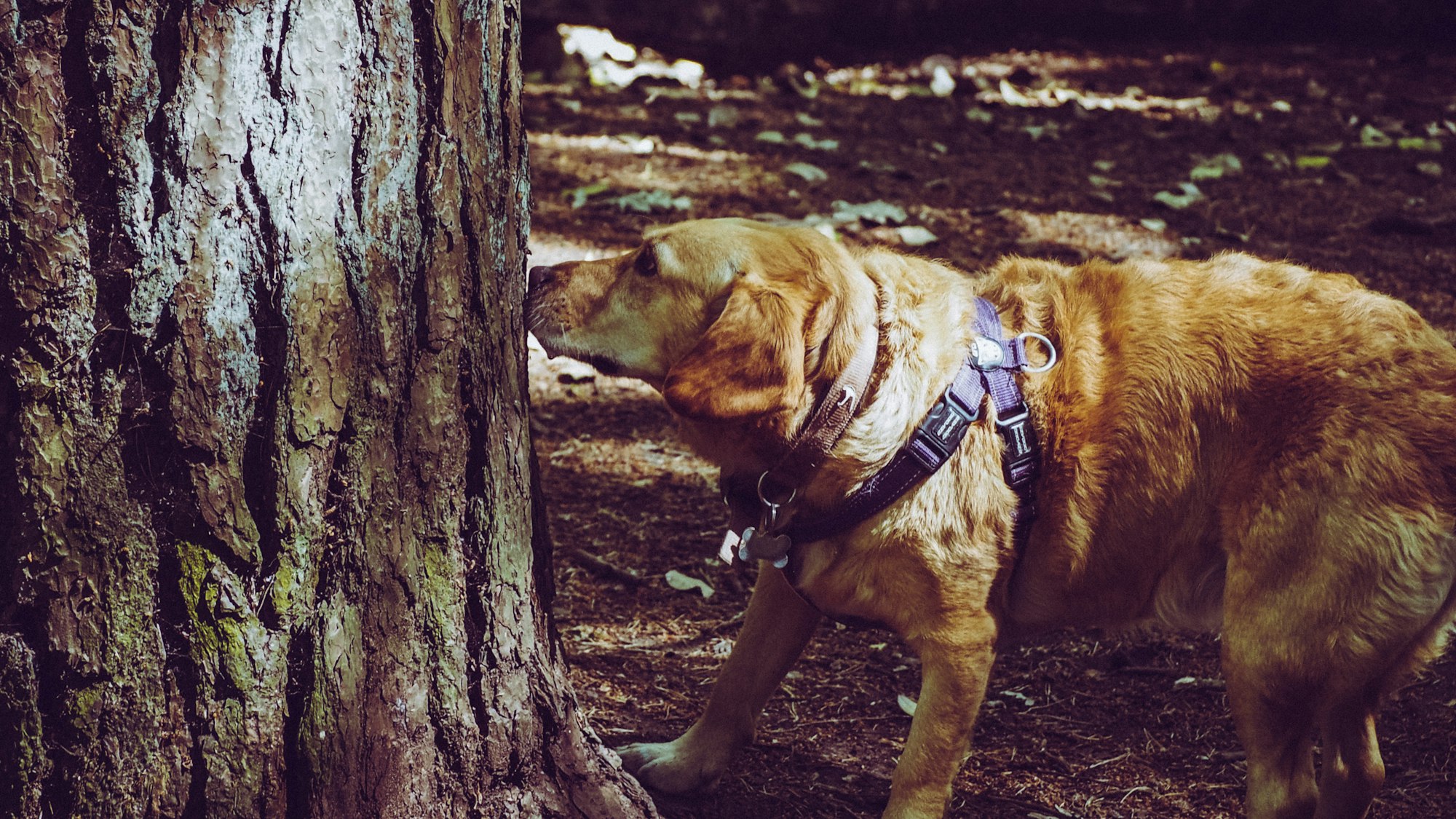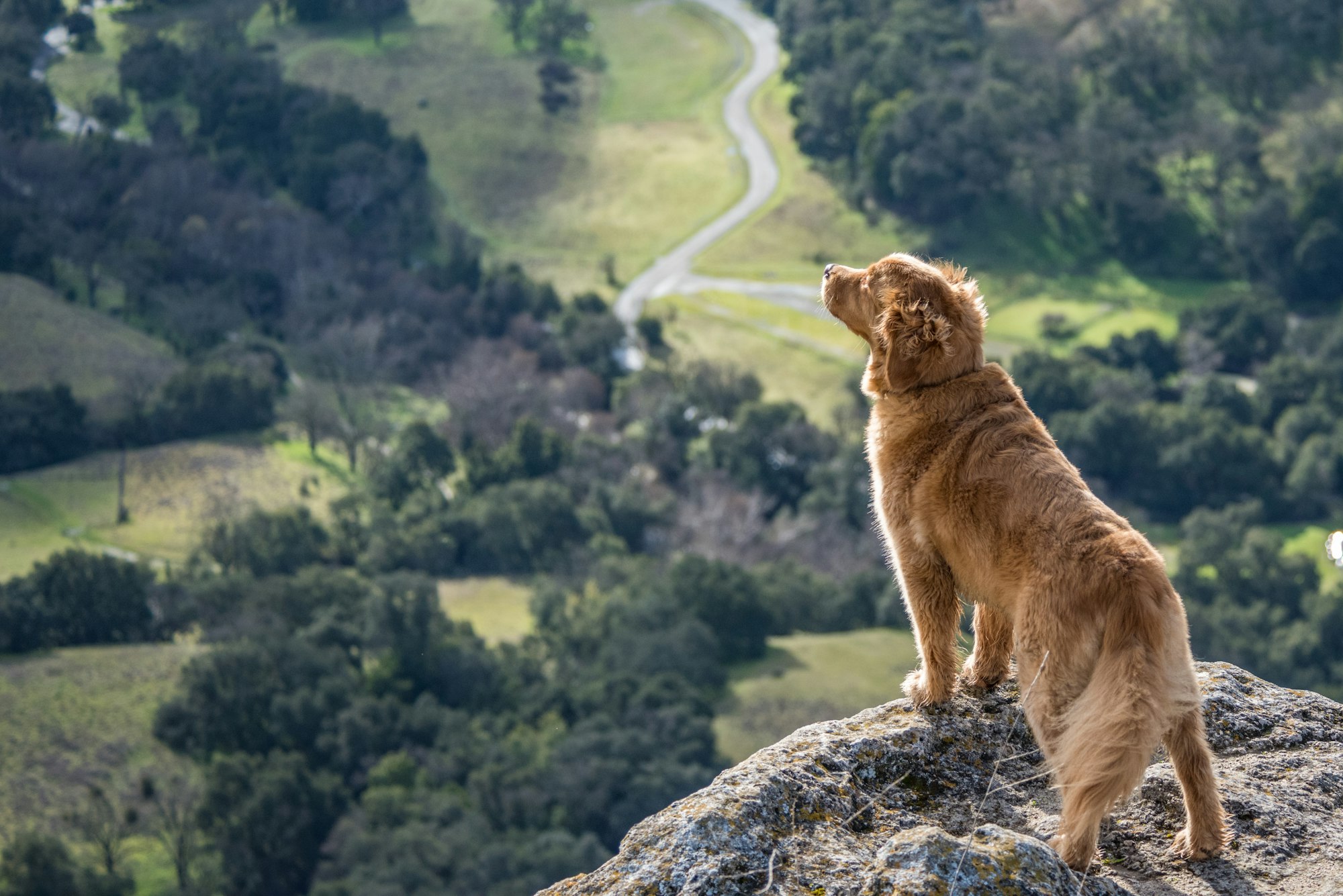Search and rescue dog training is a remarkable discipline that transforms our four-legged friends into heroes. These specially trained dogs play a pivotal role in locating missing persons in various scenarios, ranging from natural disasters to wilderness searches. In this article, we'll delve into the fascinating world of search and rescue dog training, exploring its history, the characteristics that make these dogs exceptional, the rigorous training process, and the significant impact they have on communities worldwide.

History of Search and Rescue Dogs
Search and rescue dogs have a rich history, dating back to ancient civilizations where dogs were valued for their keen senses. However, the formal training of these dogs began during the World Wars, where they were used to locate injured soldiers on the battlefield. Over the years, their role expanded beyond the military, finding applications in civilian settings during natural disasters and emergencies.
Characteristics of Search and Rescue Dogs
Search and rescue dogs possess a distinctive set of characteristics that make them well-suited for their crucial roles in various operations. These traits contribute to their effectiveness in locating missing persons and navigating challenging environments.

1. Keen Sense of Smell:
- Search and rescue dogs have an extraordinary sense of smell, often exceeding that of humans. This heightened olfactory ability enables them to detect scents over long distances and in diverse conditions.
2. Intelligence:
- Intelligence is a key characteristic sought in search and rescue dogs. This trait aids in learning and executing complex tasks during training and real-life missions.
3. Agility and Physical Fitness:
- These dogs are selected for their agility and physical fitness, allowing them to navigate diverse terrains with ease. Agility is crucial for traversing rubble, dense forests, or uneven landscapes.
4. Trainability:
- Search and rescue dogs must be highly trainable to respond effectively to commands from their handlers. This trait facilitates the learning of specialized skills crucial for search and rescue operations.
5. Endurance:
- Endurance is vital, especially during lengthy missions. Search and rescue dogs need the stamina to cover large areas while maintaining focus on their assigned tasks.
Training Process
The training process for search and rescue dogs is a meticulous and structured journey that begins from a young age. It involves various stages aimed at developing specific skills necessary for successful missions.
1. Puppy Selection:
- The training process starts with the careful selection of puppies. Traits such as temperament, socialization, and a predisposition for the desired characteristics are considered.
2. Basic Obedience Training:
- Early agility training focuses on basic obedience commands, creating a foundation for more advanced skills. This includes commands like sit, stay, and come.
3. Socialization:
- Socialization is a crucial aspect, exposing the dogs to various environments, people, and situations. This helps in developing a well-adjusted and confident search and rescue dog.
4. Scent Introduction:
- Introducing the dogs to different scents is a key part of the training process. They learn to identify and follow specific scents associated with missing persons.
5. Specialized Training:
- As the dogs mature, they undergo specialized training for skills such as tracking, air scenting, and navigating through challenging obstacles. Positive reinforcement techniques are commonly employed to reinforce desired behaviors.
Handlers and Their Role
The relationship between search and rescue dogs and their handlers is built on trust, communication, and a deep understanding of each other's cues. Handlers play a pivotal role in ensuring the success of search and rescue missions.
1. Bonding and Trust:
- Establishing a strong bond between the handler and the dog is fundamental. This bond fosters trust, essential for effective communication and cooperation during missions.
2. Interpretation of Canine Behavior:
- Handlers must be adept at interpreting the behavior of their dogs. Changes in behavior, body language, or vocalizations convey important information about the environment and the task at hand.
3. Effective Communication:
- Clear and effective communication is paramount. Handlers use verbal commands, gestures, and signals to guide their dogs during search and rescue operations.
4. Decision-Making:
- Handlers are responsible for making critical decisions during missions. This includes determining the best approach to a search area, evaluating the dog's behavior, and adapting to unforeseen challenges.
5. Continuous Training:
- Handlers undergo continuous training to stay updated on evolving techniques and technologies. This ensures they are well-prepared for the dynamic nature of search and rescue operations.
Search and Rescue Techniques
Search and rescue techniques employed by specially trained dogs are multifaceted and tailored to the specific requirements of each mission. These techniques leverage the unique abilities of search and rescue dogs to locate missing persons efficiently.

1. Air Scenting:
- Search and rescue dogs use their acute sense of smell to detect airborne scents. This technique is particularly effective in open areas, allowing the happy dog to cover large territories quickly.
2. Tracking:
- Dogs are trained to follow a specific scent trail left by a person. This technique is invaluable in scenarios where the path of the missing person is known but not visually discernible.
3. Trailing:
- Trailing involves following a scent work on the ground, even if it is faint or disrupted. Search and rescue dogs excel in navigating through challenging terrains to trace the scent to its source.
4. Area Search:
- Dogs conduct systematic searches of designated areas, both indoors and outdoors, to locate missing persons. This technique is vital in situations where the exact location of the individual is unknown.
5. Cadaver Search:
- Some search and rescue dogs are trained for cadaver searches, helping locate human remains. This skill is crucial in disaster scenarios where time is of the essence for recovery efforts.
Challenges Faced in Training
The training of search and rescue dogs is a rigorous process, and trainers encounter various challenges that require patience, adaptability, and innovative solutions.
1. Environmental Distractions:
- Training scenarios often include distractions such as loud noises, crowds, or other animals. Teaching dogs to maintain focus in diverse environments is a common challenge.
2. Realistic Simulation:
- Simulating realistic search and rescue scenarios can be challenging. Trainers strive to recreate the conditions of actual missions to ensure the dogs are prepared for the unpredictability of real-life situations.
3. Handling Unpredictability:
- Dogs must be trained to handle unpredictable elements, including changes in weather, terrain, or the presence of unfamiliar scents. This prepares them for the dynamic nature of search and rescue operations.
4. Team Dynamics:
- Coordinating efforts between search and rescue dogs and their handlers is essential. Ensuring effective communication and collaboration within the team poses a challenge during training.
5. Specialized Training for Certification:
- Meeting the specific criteria for certification adds an extra layer of challenge. Dogs must demonstrate proficiency in various skills, and handlers need to showcase their ability to manage their canine partners in diverse situations.
Certification and Evaluation
Certification is a critical step in validating the skills and readiness of search and rescue dogs and their handlers for deployment in actual missions.
1. Testing Canine Abilities:
- Dogs undergo rigorous tests to evaluate their ability to follow commands, detect scents accurately, and navigate through challenging environments. Certification ensures that they meet the standards required for effective search and rescue missions.
2. Handler Competency:
- Handlers are evaluated on their proficiency in managing their dogs during different scenarios. This includes decision-making, effective communication, and adaptability to changing conditions.
3. Ongoing Education:
- Certification is not a one-time event; it requires continuous education and reevaluation. This ensures that search and rescue teams remain at the forefront of best practices and are ready to respond to emerging challenges.
4. Standardization of Procedures:
- Certification processes aim to standardize procedures across search and rescue teams, ensuring a consistent level of expertise. This standardization enhances interoperability during collaborative efforts.
5. Community Trust:
- Certification builds trust within communities served by search and rescue teams. Knowing that teams and their dogs meet recognized standards provides reassurance during emergencies.
Deployment in Disasters
The deployment of search and rescue dogs in disasters is a critical component of emergency response efforts. These specially trained canines play a pivotal role in locating and saving individuals affected by natural or man-made disasters.

1. Earthquakes:
- In earthquake-stricken areas, search and rescue dogs navigate through unstable debris to locate survivors trapped under collapsed buildings. Their agility and keen sense of smell are invaluable in identifying signs of life.
2. Floods:
- Floodwaters can create challenging conditions, but search and rescue dogs excel in water rescue operations. Their ability to navigate through flooded areas aids in locating individuals stranded or swept away by rising waters.
3. Hurricanes and Tornadoes:
- In the aftermath of hurricanes or tornadoes, search and rescue dogs assist in searching vast areas for missing persons. Their agility allows them to cover extensive ground quickly, increasing the chances of locating survivors.
4. Wildfires:
- Search and rescue dogs are deployed in wildfire-affected areas to locate missing individuals who may be disoriented or trapped. Their ability to navigate through smoke and debris is crucial in these challenging environments.
5. Urban Disasters:
- In urban disaster scenarios, such as building collapses or explosions, search and rescue dogs play a key role in locating individuals buried under rubble. Their specialized training allows them to detect scents even in confined spaces.
Search and Rescue Dog Stories
Behind the training and deployment of search and rescue dogs are countless stories of heroism and dedication. These stories highlight the profound impact these dogs have on individuals and communities.
1. The Miracle of Molly:
- Molly, a search and rescue dog, played a vital role in locating a child who had gone missing in a dense forest. Her persistence and keen sense of smell led rescuers to the child, providing a heartwarming reunion.
2. Brave in the Rubble:
- In the aftermath of a building collapse, a search and rescue dog named Max tirelessly worked to locate survivors. Max's efforts resulted in multiple successful rescues, showcasing the unwavering dedication of these incredible animals.
3. Partners in Hope:
- A dynamic search and rescue duo, Bella and her handler, became known for their remarkable teamwork. They successfully located individuals in various disaster scenarios, becoming a symbol of hope in times of crisis.
4. The Tale of Trooper:
- Trooper, a search and rescue dog, made headlines when he assisted in locating a missing elderly person in a heavily wooded area. His dedication and skill were instrumental in bringing the missing individual to safety.
5. Rocky's Water Rescue:
- Rocky, trained for water rescue operations, played a crucial role during a flood emergency. His ability to navigate through swift currents and locate individuals in distress highlighted the versatility of search and rescue dogs.

Technology in Search and Rescue
While search and rescue dogs are indispensable, technology has become an integral part of enhancing their capabilities and improving overall effectiveness in emergency response.
1. Drones and Thermal Imaging:
- Drones equipped with thermal imaging technology assist search and rescue teams by providing aerial views of disaster-stricken areas. This aids in identifying heat signatures of individuals, especially at night or in challenging terrains.
2. GPS Tracking Systems:
- GPS devices attached to search and rescue dog harnesses provide real-time location data. This technology enhances coordination between dog teams and allows handlers to monitor their dogs' movements in large or complex search areas.
3. Communication Devices:
- Advanced communication devices enable seamless coordination between search and rescue teams. Handlers can relay information to and from the dogs in real-time, ensuring efficient and effective collaboration during missions.
4. Wearable Technology:
- Dogs may wear specialized sensors or cameras to provide live feeds to handlers. This technology allows handlers to see the dog's perspective and gather additional information about the environment.
5. Augmented Reality (AR):
- AR applications assist handlers in visualizing search areas and potential hazards. This technology overlays digital information onto the real-world environment, aiding in strategic decision-making during search and rescue operations.
Global Impact of Search and Rescue Dogs
Search and rescue efforts extend beyond national borders. International collaborations and partnerships bring together skilled teams of dogs and handlers to respond to disasters worldwide. The global impact of these efforts is a testament to the importance of a coordinated and compassionate approach to disaster response.
Future Trends in Search and Rescue Dog Training
As technology advances, so does the field of search and rescue dog training. Innovations in training methodologies, such as virtual reality simulations, provide new avenues for preparing dogs for complex scenarios. The future promises continued advancements that will further enhance the capabilities of these incredible animals.
Benefits Beyond Search and Rescue
Search and rescue dogs also contribute to community well-being beyond emergency situations. Their gentle nature and comforting presence make them ideal for therapy and emotional support roles. Community outreach programs involving these dogs promote awareness and appreciation for their multifaceted contributions.
Conclusion
In conclusion, search and rescue dog training represents a harmonious blend of skill, dedication, and compassion. These remarkable animals, guided by their handlers, stand as a beacon of hope in times of crisis. Their ability to navigate challenging environments and save lives is a testament to the impact that well-trained dogs can have on the well-being of communities globally.
FAQs
- Q1: How long does it take to train a search and rescue dog?
Training periods vary but typically range from six months to two years, depending on the complexity of the skills being taught and the individual aptitude of the dog.
- Q2: Are specific breeds better suited for search and rescue missions?
While various breeds can be trained, breeds like German Shepherds, Labrador Retrievers, and Border Collies are often preferred due to their intelligence and physical capabilities.
- Q3: What is the success rate of search and rescue missions involving dogs?
Success rates can vary based on factors like the nature of the mission and environmental conditions, but well-trained search and rescue dogs significantly increase the chances of a successful outcome.
- Q4: How are search and rescue dogs deployed in natural disasters?
Search and rescue dogs are often deployed alongside human rescue teams. They use their acute sense of smell to locate survivors in areas that may be difficult for human rescuers to access.
- Q5: Can search and rescue dogs be trained for specific environments?
Yes, training programs often expose dogs to a variety of environments to ensure their adaptability. Specialized training for urban, wilderness, and disaster scenarios is common.




